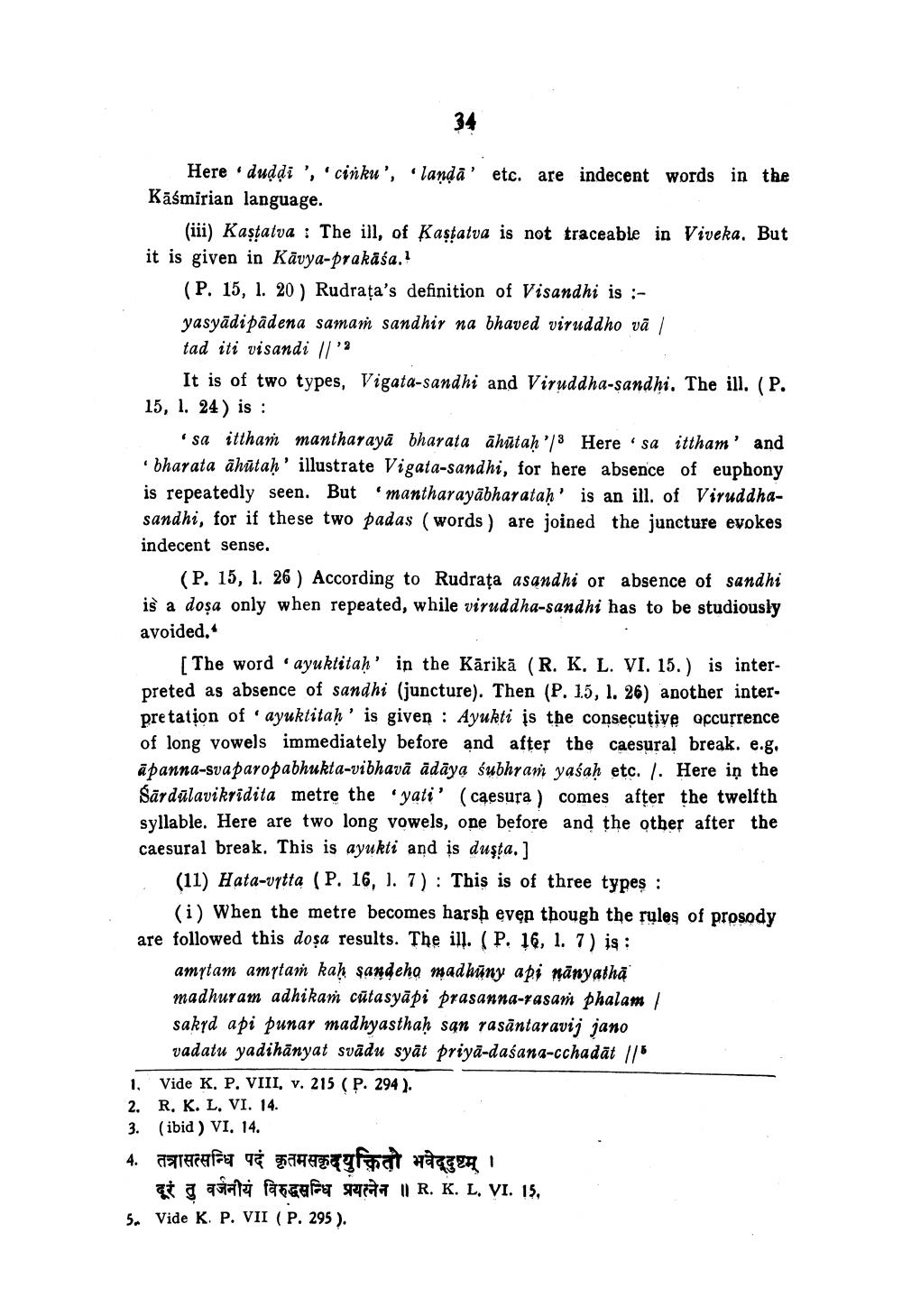________________ Here .duddi ', 'cinku', 'landa' etc. are indecent words in the Kasmirian language. (iii) Kastatva : The ill, of Kastatva is not traceable in Viveka. But it is given in Kavya-prakasa.! (P. 15, 1. 20 ) Rudrata's definition of Visandhi is :yasyadipadena samam sandhir na bhaved viruddho va / tad iti visandi //'3 It is of two types, Vigata-sandhi and Viruddha-sandhi. The ill. (P. 15, 1. 24) is : sa ittham mantharaya bharata ahutah '3 Here sa ittham' and bharata ahutah' illustrate Vigata-sandhi, for here absence of euphony is repeatedly seen. But 'mantharayabharatah' is an ill. of Viruddhasandhi, for if these two padas (words) are joined the juncture evokes indecent sense. (P. 15, 1. 26 ) According to Rudrata asandhi or absence of sandhi is a dosa only when repeated, while viruddha-sandhi has to be studiously avoided. [The word "ayuktitah' in the Karika (R. K, L. VI. 15.) is interpreted as absence of sandhi (juncture). Then (P. 1.5, 1. 26) another interpretation of ' ayuktitah' is given : Ayukti is the consecutive occurrence of long vowels immediately before and after the caesural break. e.g. apanna-svaparopabhukta-vibhava adaya subhram yasah etc. 1. Here in the Sardulavikridita metre the yati' (caesura) comes after the twelfth syllable. Here are two long vowels, one before and the other after the caesural break. This is ayukti and is dusta. ] (11) Hata-vytta (P. 16, 1. 7): This is of three types : (i) When the metre becomes harsh even though the rules of prosody are followed this dosa results. The ill. (P. 16, 1. 7) is : amytam amytan kah sandeha madhuny api manyatha madhuram adhikam catasyapi prasanna-rasan phalam 1 sakyd api punar madhyasthah san rasantaravij jano vadatu yadihanyat svadu syat priya-dasana-cchadat //5 1. Vide K, P. VIII, v. 215 (P. 294). 2. R, K. L. VI. 14. 3. (ibid) VI, 14. तत्रासत्सन्धि पदं कृतमसकृदयक्तितो भवेष्टम / a gavate fargefa sercatat | R. K. L. VI. 15, 5. Vide K. P. VII (P. 295 ).




